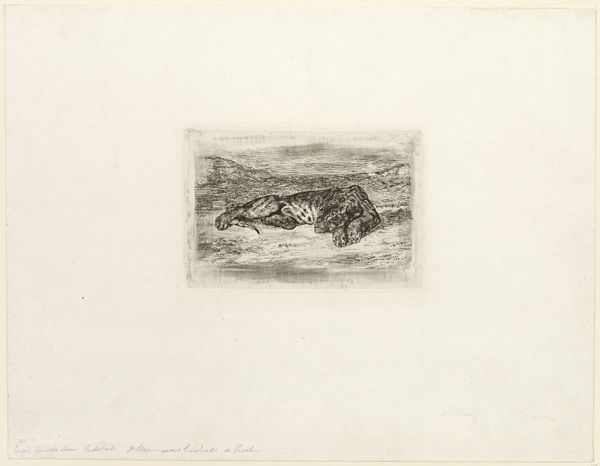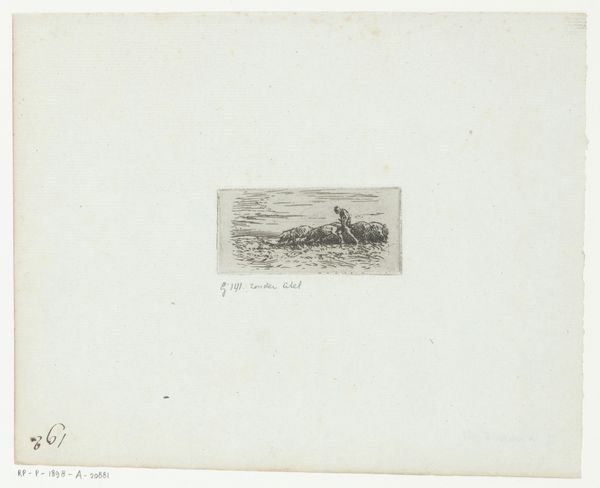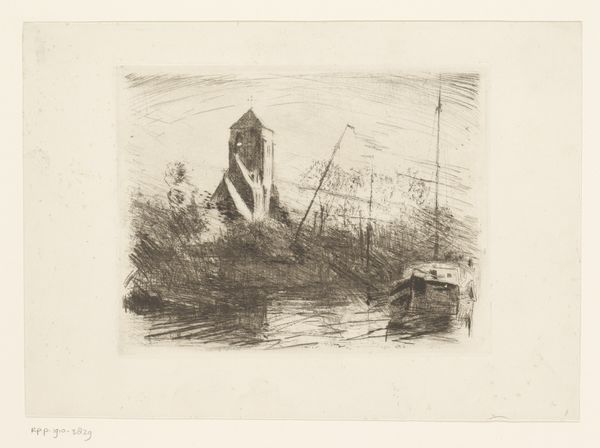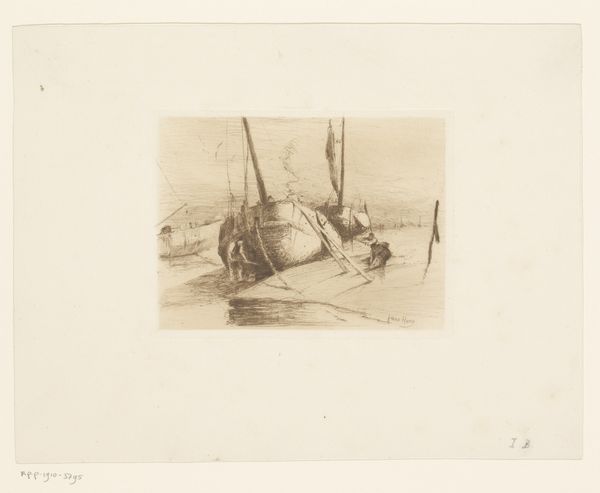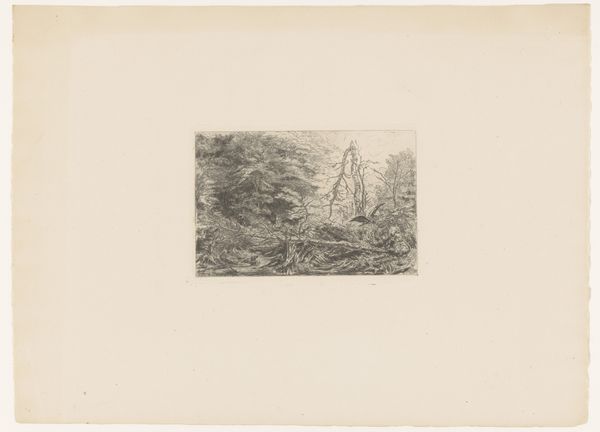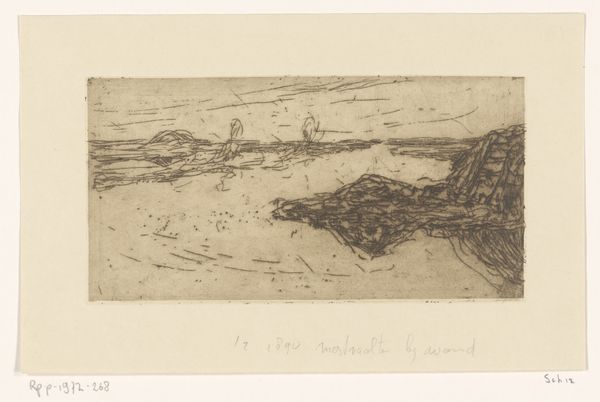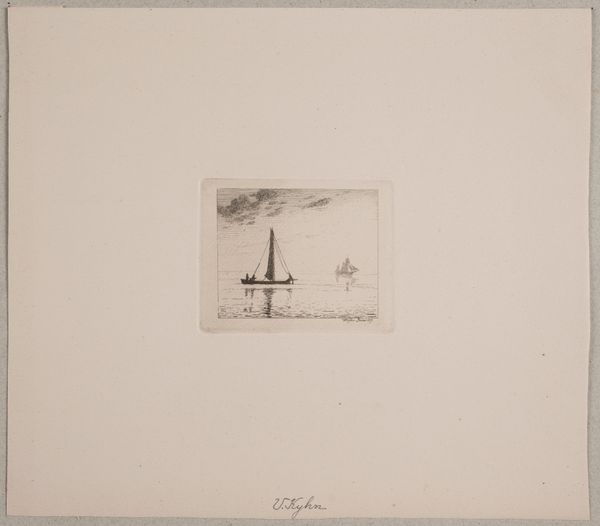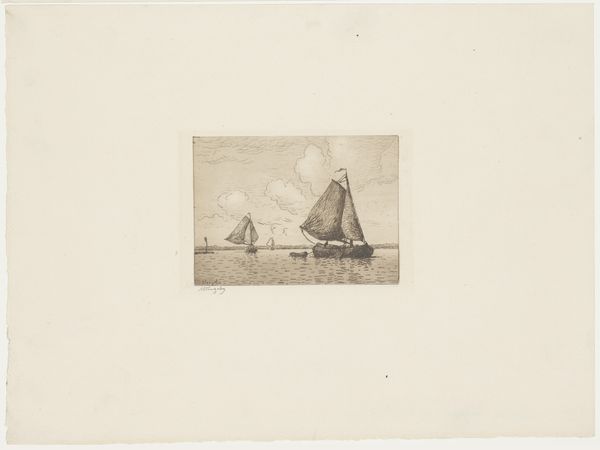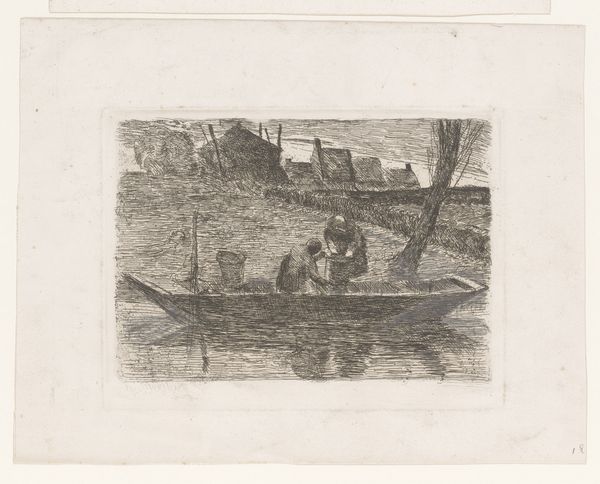
drawing, print, etching, paper
#
drawing
# print
#
etching
#
landscape
#
paper
#
realism
Dimensions: 48 × 119 mm (image/plate); 53 × 122 mm (sheet)
Copyright: Public Domain
Editor: We’re looking at Jean-François Millet's "A Sheep Grazing," an etching from 1849, currently at the Art Institute of Chicago. The detail is impressive, especially considering how small the actual image is on the page. It’s a fairly simple composition, but it evokes a feeling of rural tranquility, maybe even loneliness. What’s your interpretation of it? Curator: Millet, as a key figure in the Realist movement, deliberately presented scenes of rural life to counter the romanticized views of the French countryside often displayed in Salon paintings. What do you notice about the figure of the sheep itself, its placement in the scene? Editor: Well, it’s the central figure, but it seems almost incidental to the broader landscape, bent low eating grass. It definitely doesn't seem idealized or majestic. Curator: Precisely. Millet elevates the everyday, demonstrating dignity in the labor and lives of rural communities. In 1849, France was on the brink of massive social change. How might an image like this be received against the backdrop of industrialization and the rise of urban centers? Editor: Maybe as a subtle form of social commentary? A reminder of a disappearing way of life or a call for appreciating the value of rural labor? Curator: Exactly. Millet isn't just depicting a sheep; he's engaging with the complex social and economic realities of his time, urging viewers to consider the lives and contributions of those often overlooked by the dominant narratives. Consider where and how this etching would have been shown. What do you imagine were the exhibition venues and buyers? Editor: Probably smaller galleries or even private collections, perhaps appealing to a burgeoning middle class interested in Realism but lacking the resources to buy large paintings. Curator: That's right! Reflecting on this, I think I better understand how Millet used this type of seemingly innocuous scene as a quiet act of political and cultural assertion. Editor: It makes me appreciate how much history can be embedded in what initially seems like a simple pastoral image.
Comments
No comments
Be the first to comment and join the conversation on the ultimate creative platform.

